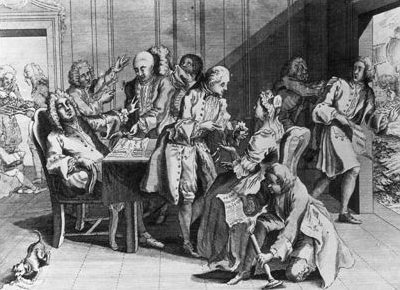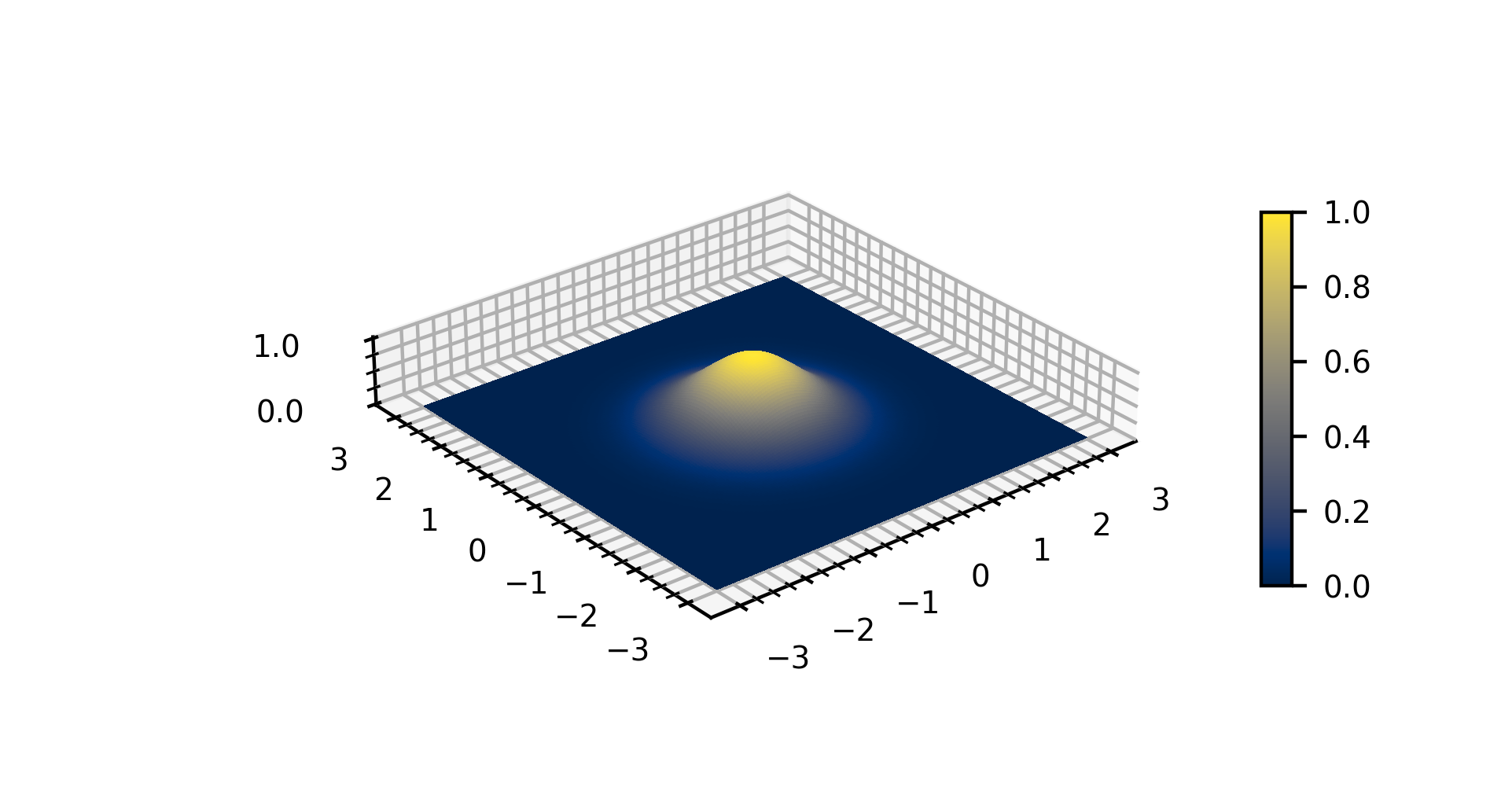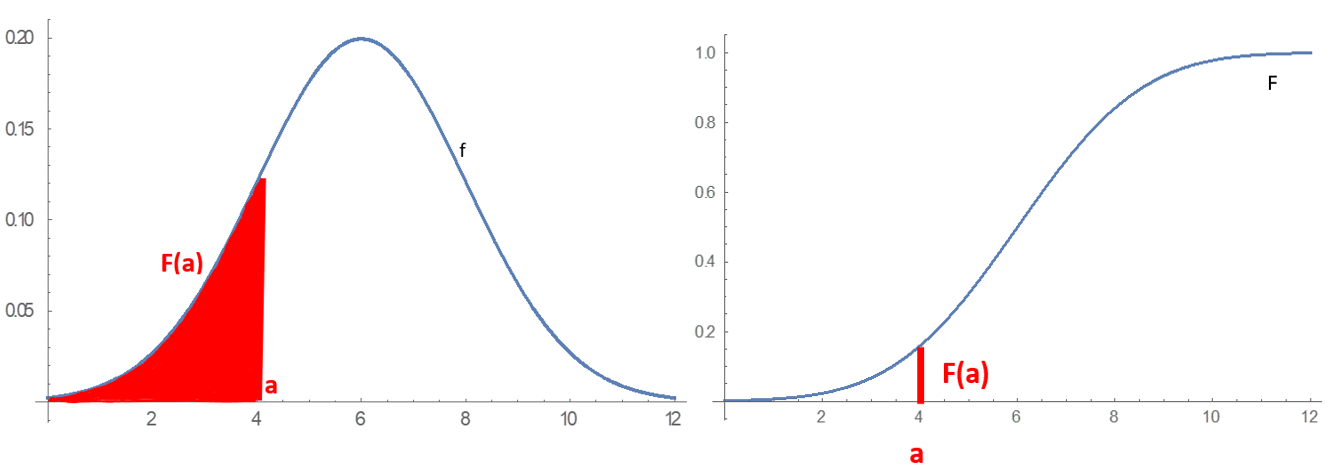|
De Moivre–Laplace Theorem
In probability theory, the de Moivre–Laplace theorem, which is a special case of the central limit theorem, states that the normal distribution may be used as an approximation to the binomial distribution under certain conditions. In particular, the theorem shows that the probability mass function of the random number of "successes" observed in a series of n independent Bernoulli trials, each having probability p of success (a binomial distribution with n trials), converges to the probability density function of the normal distribution with expectation np and standard deviation \sqrt, as n grows large, assuming p is not 0 or 1. The theorem appeared in the second edition of '' The Doctrine of Chances'' by Abraham de Moivre, published in 1738. Although de Moivre did not use the term "Bernoulli trials", he wrote about the probability distribution of the number of times "heads" appears when a coin is tossed 3600 times. This is one derivation of the particular Gaussian function ... [...More Info...] [...Related Items...] OR: [Wikipedia] [Google] [Baidu] |
Quincunx (Galton Box) - Galton 1889 Diagram
A quincunx ( ) is a geometric pattern consisting of five points arranged in a cross, with four of them forming a square or rectangle and a fifth at its center. The same pattern has other names, including "in saltire" or "in cross" in heraldry (depending on the orientation of the outer square), the five-point stencil in numerical analysis, and the five dots tattoo. It forms the arrangement of five units in the pattern corresponding to the five-spot on six-sided dice, playing cards, and dominoes. It is represented in Unicode as or (for the die pattern) . Historical origins of the name The quincunx was originally a coin issued by the Roman Republic , whose value was five twelfths (''quinque'' and ''uncia'') of an as, the Roman standard bronze coin. On the Roman quincunx coins, the value was sometimes indicated by a pattern of five dots or pellets. However, these dots were not always arranged in a quincunx pattern. The ''Oxford English Dictionary'' (OED) dates the first appeara ... [...More Info...] [...Related Items...] OR: [Wikipedia] [Google] [Baidu] |
Abraham De Moivre
Abraham de Moivre FRS (; 26 May 166727 November 1754) was a French mathematician known for de Moivre's formula, a formula that links complex numbers and trigonometry, and for his work on the normal distribution and probability theory. He moved to England at a young age due to the religious persecution of Huguenots in France which reached a climax in 1685 with the Edict of Fontainebleau. He was a friend of Isaac Newton, Edmond Halley, and James Stirling (mathematician), James Stirling. Among his fellow Huguenot exiles in England, he was a colleague of the editor and translator Pierre des Maizeaux. De Moivre wrote a book on probability theory, ''The Doctrine of Chances'', said to have been prized by gamblers. De Moivre first discovered Binet's formula, the closed-form expression for Fibonacci numbers linking the ''n''th power of the golden ratio ''φ'' to the ''n''th Fibonacci number. He also was the first to postulate the central limit theorem, a cornerstone of probability theo ... [...More Info...] [...Related Items...] OR: [Wikipedia] [Google] [Baidu] |
1738 Introductions
Events January–March * January 1 – At least 664 African slaves drown when the Dutch West Indies Company slave ship ''Leusden'' capsizes and sinks in the Maroni River during its arrival in Surinam. The Dutch crew escapes, and leaves the slaves locked below decks to die. * January 3 – George Frideric Handel's opera ''Faramondo'' is given its first performance. * January 7 – After the Maratha Empire of India wins the Battle of Bhopal over the Jaipur State, Jaipur cedes the Malwa territory to the Maratha in a treaty signed at Doraha. * February 4 – Court Jew Joseph Süß Oppenheimer is executed in Württemberg. * February 11 – Jacques de Vaucanson stages the first demonstration of an early automaton, '' The Flute Player'' at the Hotel de Longueville in Paris, and continues to display it until March 30. * February 20 – The Swedish Levant Company is founded. * March 28 – Mariner Robert Jenkins presents a pickled ear, which h ... [...More Info...] [...Related Items...] OR: [Wikipedia] [Google] [Baidu] |
Poisson Limit Theorem
In probability theory, the law of rare events or Poisson limit theorem states that the Poisson distribution may be used as an approximation to the binomial distribution, under certain conditions. The theorem was named after Siméon Denis Poisson (1781–1840). A generalization of this theorem is Le Cam's theorem. Theorem Let p_n be a sequence of real numbers in ,1 such that the sequence n p_n converges to a finite limit \lambda . Then: :\lim_ p_n^k (1-p_n)^ = e^\frac First proof Assume \lambda > 0 (the case \lambda = 0 is easier). Then : \begin \lim\limits_ p_n^k (1-p_n)^ &= \lim_\frac \left(\frac(1+o(1))\right)^k \left(1- \frac(1+o(1))\right)^ \\ &= \lim_\frac \frac \left(1- \frac(1+o(1))\right)^ \left(1- \frac(1+o(1))\right)^\\ &= \lim_\frac \left(1-\frac(1+o(1))\right)^. \end Since : \lim_ \left(1-\frac(1+o(1))\right)^ = e^ this leaves :p^k (1-p)^ \simeq \frac. Alternative proof Using Stirling's approximation, it can be written: : \begin p^k (1-p)^ &= \frac ... [...More Info...] [...Related Items...] OR: [Wikipedia] [Google] [Baidu] |
Stirling's Formula
In mathematics, Stirling's approximation (or Stirling's formula) is an Asymptotic analysis, asymptotic approximation for factorials. It is a good approximation, leading to accurate results even for small values of n. It is named after James Stirling (mathematician), James Stirling, though a related but less precise result was first stated by Abraham de Moivre. One way of stating the approximation involves the logarithm of the factorial: \ln(n!) = n\ln n - n +O(\ln n), where the big O notation means that, for all sufficiently large values of n, the difference between \ln(n!) and n\ln n-n will be at most proportional to the logarithm of n. In computer science applications such as the Comparison sort#Number of comparisons required to sort a list, worst-case lower bound for comparison sorting, it is convenient to instead use the binary logarithm, giving the equivalent form \log_2 (n!) = n\log_2 n - n\log_2 e +O(\log_2 n). The error term in either base can be expressed more precisely as ... [...More Info...] [...Related Items...] OR: [Wikipedia] [Google] [Baidu] |
Derivative
In mathematics, the derivative is a fundamental tool that quantifies the sensitivity to change of a function's output with respect to its input. The derivative of a function of a single variable at a chosen input value, when it exists, is the slope of the tangent line to the graph of the function at that point. The tangent line is the best linear approximation of the function near that input value. For this reason, the derivative is often described as the instantaneous rate of change, the ratio of the instantaneous change in the dependent variable to that of the independent variable. The process of finding a derivative is called differentiation. There are multiple different notations for differentiation. '' Leibniz notation'', named after Gottfried Wilhelm Leibniz, is represented as the ratio of two differentials, whereas ''prime notation'' is written by adding a prime mark. Higher order notations represent repeated differentiation, and they are usually denoted in Leib ... [...More Info...] [...Related Items...] OR: [Wikipedia] [Google] [Baidu] |
Difference Equation
In mathematics, a recurrence relation is an equation according to which the nth term of a sequence of numbers is equal to some combination of the previous terms. Often, only k previous terms of the sequence appear in the equation, for a parameter k that is independent of n; this number k is called the ''order'' of the relation. If the values of the first k numbers in the sequence have been given, the rest of the sequence can be calculated by repeatedly applying the equation. In ''linear recurrences'', the th term is equated to a linear function of the k previous terms. A famous example is the recurrence for the Fibonacci numbers, F_n=F_+F_ where the order k is two and the linear function merely adds the two previous terms. This example is a linear recurrence with constant coefficients, because the coefficients of the linear function (1 and 1) are constants that do not depend on n. For these recurrences, one can express the general term of the sequence as a closed-form expression o ... [...More Info...] [...Related Items...] OR: [Wikipedia] [Google] [Baidu] |
Neighborhood (mathematics)
In topology and related areas of mathematics, a neighbourhood (or neighborhood) is one of the basic concepts in a topological space. It is closely related to the concepts of open set and interior. Intuitively speaking, a neighbourhood of a point is a set of points containing that point where one can move some amount in any direction away from that point without leaving the set. Definitions Neighbourhood of a point If X is a topological space and p is a point in X, then a neighbourhood of p is a subset V of X that includes an open set U containing p, p \in U \subseteq V \subseteq X. This is equivalent to the point p \in X belonging to the topological interior of V in X. The neighbourhood V need not be an open subset of X. When V is open (resp. closed, compact, etc.) in X, it is called an (resp. closed neighbourhood, compact neighbourhood, etc.). Some authors require neighbourhoods to be open, so it is important to note their conventions. A set that is a neighbourhood ... [...More Info...] [...Related Items...] OR: [Wikipedia] [Google] [Baidu] |
Gaussian Function
In mathematics, a Gaussian function, often simply referred to as a Gaussian, is a function (mathematics), function of the base form f(x) = \exp (-x^2) and with parametric extension f(x) = a \exp\left( -\frac \right) for arbitrary real number, real constants , and non-zero . It is named after the mathematician Carl Friedrich Gauss. The graph of a function, graph of a Gaussian is a characteristic symmetric "Normal distribution, bell curve" shape. The parameter is the height of the curve's peak, is the position of the center of the peak, and (the standard deviation, sometimes called the Gaussian Root mean square, RMS width) controls the width of the "bell". Gaussian functions are often used to represent the probability density function of a normal distribution, normally distributed random variable with expected value and variance . In this case, the Gaussian is of the form g(x) = \frac \exp\left( -\frac \frac \right). Gaussian functions are widely used in statistics to describ ... [...More Info...] [...Related Items...] OR: [Wikipedia] [Google] [Baidu] |
Probability Distribution
In probability theory and statistics, a probability distribution is a Function (mathematics), function that gives the probabilities of occurrence of possible events for an Experiment (probability theory), experiment. It is a mathematical description of a Randomness, random phenomenon in terms of its sample space and the Probability, probabilities of Event (probability theory), events (subsets of the sample space). For instance, if is used to denote the outcome of a coin toss ("the experiment"), then the probability distribution of would take the value 0.5 (1 in 2 or 1/2) for , and 0.5 for (assuming that fair coin, the coin is fair). More commonly, probability distributions are used to compare the relative occurrence of many different random values. Probability distributions can be defined in different ways and for discrete or for continuous variables. Distributions with special properties or for especially important applications are given specific names. Introduction A prob ... [...More Info...] [...Related Items...] OR: [Wikipedia] [Google] [Baidu] |
The Doctrine Of Chances
''The Doctrine of Chances'' was the first textbook on probability theory, written by 18th-century French mathematician Abraham de Moivre and first published in 1718.. De Moivre wrote in English because he resided in England at the time, having fled France to escape the persecution of Huguenots. The book's title came to be synonymous with ''probability theory'', and accordingly the phrase was used in Thomas Bayes' famous posthumous paper ''An Essay Towards Solving a Problem in the Doctrine of Chances'', wherein a version of Bayes' theorem was first introduced. Editions The full title of the first edition was ''The Doctrine of Chances: or, A Method of Calculating the Probability of Events in Play''. It was published in 1718, by W. Pearson, and ran for 175 pages. Published in 1738 by Woodfall and running for 258 pages, the second edition of de Moivre's book introduced the concept of normal distributions as approximations to binomial distributions. In effect de Moivre proved a spec ... [...More Info...] [...Related Items...] OR: [Wikipedia] [Google] [Baidu] |



